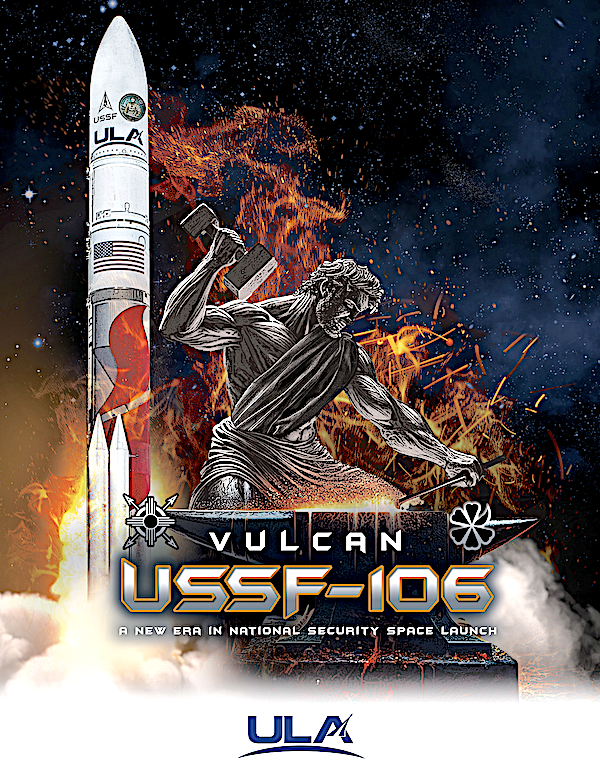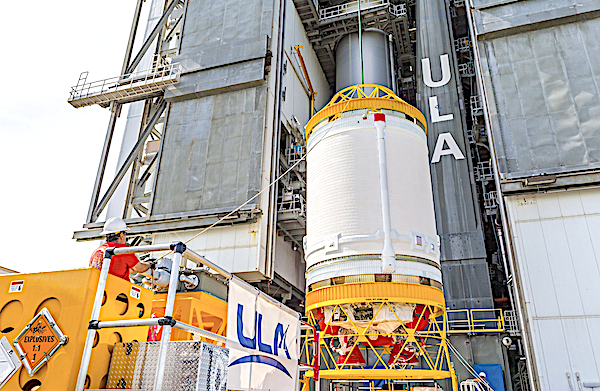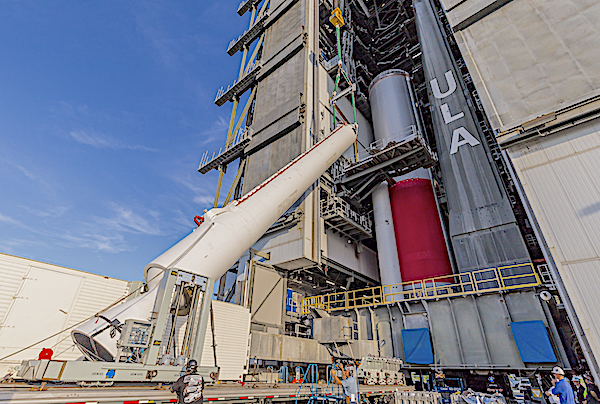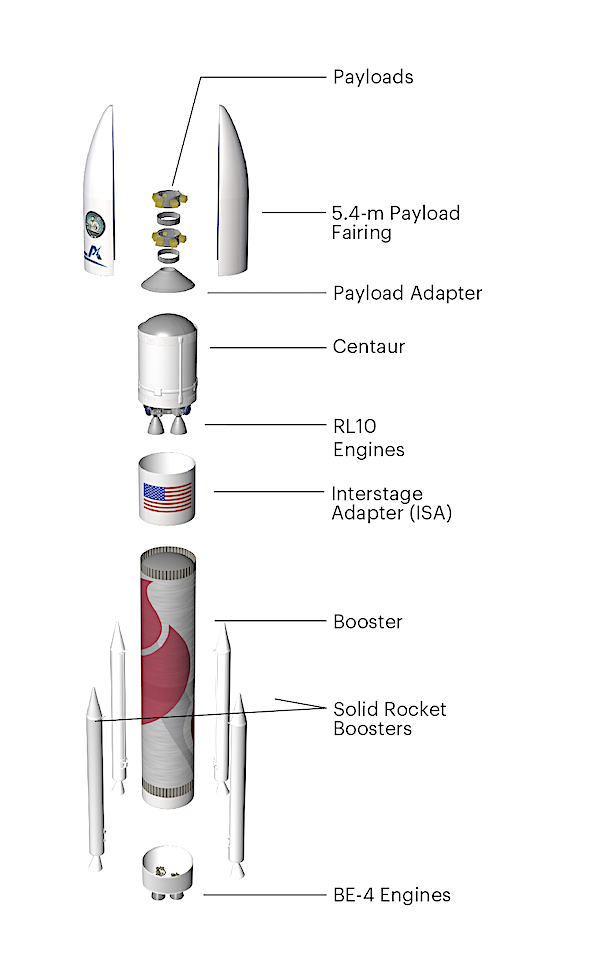
The first U.S. national security launch aboard a United Launch Alliance (ULA) Vulcan rocket will be the United States Space Force (USSF)-106 mission. Liftoff will occur at an as-yet-to-be-determined launch date from Space Launch Complex-41 at Cape Canaveral Space Force Station in Florida.
ULA is set to launch a Vulcan Centaur VC4S rocket, with four solid rocket boosters, to send USSF-106 directly to geosynchronous orbit for the U.S. Space Force’s Space Systems Command. This will be the first National Security Space Launch (NSSL) mission on a Vulcan rocket.
From its inception, the Vulcan rocket was designed to deliver heavy payloads to any orbit. The upcoming USSF-106 mission utilizes this capability with Centaur V launching a multi-manifest U.S. national security payload directly to geosynchronous orbit for the Space Force.

United Launch Alliance (ULA) hoists its Centaur V upper stage atop the Vulcan rocket that will launch the multi-manifest USSF-106 payload. This will be Vulcan’s first national security mission for the U.S. Space Force Space Systems Command (SSC). Photo credit: ULA
ULA technicians at Cape Canaveral are assembling the most powerful Vulcan rocket yet. Together with its twin BE-4 main engines and four side-mounted GEM 63XL solid rocket boosters, Vulcan will generate three million pounds (13 meganewtons) of liftoff thrust to launch the USSF-106 mission.

Launch Vehicle
Payload Fairing

The spacecraft is encapsulated in a 5.4-m- (17.7-ft-) diameter payload fairing (PLF), a sandwich composite structure made with a vented aluminum-honeycomb core and graphite-epoxy face sheets. The bisector (two-piece shell) PLF encapsulates the spacecraft. The payload attach fitting (PAF) is a similar sandwich composite structure creating the mating interface from spacecraft to second stage and payload fairing. The PLF separates using a debris-free horizontal and vertical separation system with spring packs and frangible joint assembly. The payload fairing is available in the 15.5-m (51-ft) standard and 21.3-m (70-ft) long configurations.
Centaur V
The Centaur V second stage is 17.7 ft (5.4 m) in diameter and 38.5 ft (11.7 m) in length. Its propellant tanks are pressure-stabilized and constructed of corrosion-resistant stainless steel. Centaur is a cryogenic vehicle, fueled with liquid hydrogen and liquid oxygen, powered by two RL10C-1-1A engines producing 23,825 pounds (106 kilo-Newtons) of thrust. The cryogenic tanks are insulated with a combination of multilayer insulation (MLI) blankets, radiation shields and spray-on foam insulation (SOFI). A fault-tolerant avionics system is mounted on an aft equipment shelf. The payload attach fitting (PAF) provides structural and electrical interfaces with the spacecraft and is mounted to the Centaur V Launch Vehicle Forward Adapter (LVFA).
Booster
The booster is 17.7 ft (5.4 m) in diameter and 109.2 ft (33.3 m) in length. The booster’s tanks are structurally rigid and constructed of orthogrid aluminum barrels, spun-formed aluminum domes with a common bulkhead. The liquefied natural gas (LNG) / methane fueled booster will be powered by a pair of BE-4 engines, each producing 550,000 pounds (2,400 kN) of sea level thrust. Four graphite epoxy motor (GEM) 63XL solid rocket boosters (SRBs) generate the additional power required at liftoff, with each providing 459,600 lbs (2,044 kN) of thrust. The Centaur avionics system, provides guidance, flight control and vehicle sequencing functions during the booster and Centaur phases of flight.
